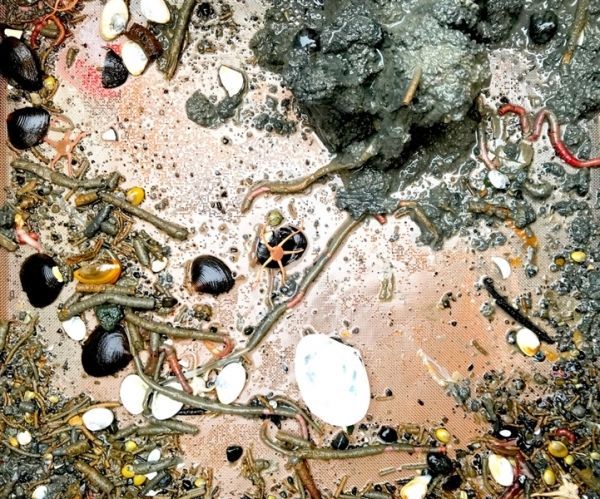Seven often wet and muddy researchers can be found bundled in their orange full-body suits sifting through mud on the back deck of the Healy.
Seven often wet and muddy researchers can be found bundled in their orange full-body suits sifting through mud on the back deck of the Healy. They are investigating areas considered biological “hotspots” – or areas of high productivity – in the Pacific Arctic Sector, as part of a program called the Distributed Biological Observatory or DBO. The DBO grew from an international recognition that collecting standard samples by the many ships passing through the Bering Strait region could help map ecosystems in transition. On board the Healy this August, scientists are adding information to a decade’s worth of documenting how life in the sediment of the Arctic is changing as waters warm.
If you pull up a chunk of mud from the Bering or Chukchi seafloors, you will likely find an assortment of creatures such as clams, brittle stars, and worms that are sometimes as long as your forearm. These critters that live on the seafloor are fundamental to the food-web of the Bering and Chukchi Seas. Sea ducks, gray whales, walrus, and many fish rely directly them as a primary food source. In the last three to five years the organisms collected in mud samples have pointed to a changing Arctic ecosystem. The changes are likely the result of the dramatic decrease in the extent of sea ice in the Pacific Arctic region and a waterfall of effects that ice loss has on the Arctic. Seasonally warming bottom water temperatures, changes in prey or food concentration, and a northward migration of certain species are some of the changes DBO scientists have observed. “Things are happening, and they are happening fast,” said Dr. Jackie Grebmeier, one of the lead scientists for the DBO project. “Because the DBO is in place we are able to track them.”
Continue reading at NOAA.
Image via NOAA.




